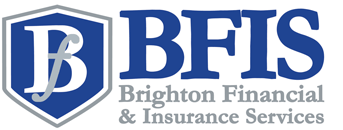What Real Estate Investors Need to Know About 1031 Exchange
See How We're Different
or call us: 888-412-7630

By: Vernon Williams | Commercial Agency Advisors & Principal
888-412-7630 | vwilliams@thebrightonfinancial.com
Real estate investors are always on the lookout for opportunities to grow their portfolio and maximize returns. One tool that can greatly benefit investors is the 1031 exchange. In this article, we will explore the basics of the 1031 exchange, its process, benefits, potential risks, and key considerations for investors.
Understanding the Basics of 1031 Exchange
Definition and Purpose of 1031 Exchange
The 1031 exchange, also known as a like-kind exchange or a Starker exchange, is a tax-deferred transaction that allows real estate investors to sell a property and reinvest the proceeds into another property without incurring immediate tax liability on the capital gains. This exchange is governed by Section 1031 of the Internal Revenue Code.
The purpose of this exchange is to encourage real estate investment and stimulate economic growth by providing investors with an opportunity to defer the payment of taxes. By allowing investors to reinvest their capital gains into other properties, the 1031 exchange promotes the continuous circulation of capital within the real estate market, fostering growth and development.
The Role of 1031 Exchange in Real Estate Investment
For real estate investors, the 1031 exchange serves as a powerful tool for portfolio growth and wealth accumulation. By deferring taxes, investors can leverage their capital gains to acquire higher-value properties, thereby increasing their cash flow and net worth.
One of the key advantages of the 1031 exchange is the flexibility it offers to investors. It allows them to adapt their investment strategies over time and take advantage of emerging market trends. For example, an investor who initially focuses on residential properties can later transition to commercial properties or even explore opportunities in different geographic locations.
Furthermore, the 1031 exchange can provide investors with a competitive edge in the real estate market. By deferring taxes, investors have more capital available to make attractive offers and secure desirable properties. This can be particularly beneficial in competitive markets where multiple buyers are vying for the same property.
Another important aspect of the 1031 exchange is the potential for diversification. Through this exchange, investors can diversify their real estate holdings by acquiring properties in different asset classes or geographic areas. This diversification helps mitigate risk and provides a more balanced and resilient investment portfolio.
Moreover, the 1031 exchange can be a valuable estate planning tool. By deferring taxes, investors can pass on their real estate holdings to future generations without the burden of immediate tax liability. This allows for the preservation and transfer of wealth within families, ensuring a lasting legacy.
In conclusion, the 1031 exchange is a powerful mechanism that enables real estate investors to defer taxes, leverage their capital gains, and strategically grow their portfolios. By promoting investment and providing flexibility, this exchange plays a crucial role in the real estate industry, driving economic growth and creating opportunities for investors to thrive.
The Process of a 1031 Exchange
Identifying Replacement Property
The first step in a 1031 exchange is identifying suitable replacement property within a specific timeframe. The IRS requires investors to identify the replacement property within 45 days of selling the relinquished property. It is crucial to consider factors such as location, potential for appreciation, rental income, and management requirements when selecting the replacement property.
During the identification period, investors often work closely with real estate agents, brokers, and other professionals to find the ideal replacement property. They may conduct extensive market research, analyze property values, and evaluate potential rental income. This process involves visiting different properties, attending open houses, and conducting thorough inspections to ensure that the replacement property meets their investment goals and objectives.
Investors also consider the long-term potential of the replacement property. They assess factors such as economic growth, job opportunities, and infrastructure development in the area. By studying market trends and consulting with experts, investors can make informed decisions about the replacement property that align with their investment strategies.
Completing the Exchange
Once the replacement property is identified, the investor must enter into a purchase agreement and provide a notice of intent to conduct a 1031 exchange to all parties involved. The proceeds from the sale of the relinquished property are held by a qualified intermediary, who facilitates the exchange. The investor must acquire the replacement property within 180 days of selling the relinquished property to complete the exchange.
During the exchange process, investors often work closely with their qualified intermediaries to ensure compliance with IRS regulations. These intermediaries play a crucial role in facilitating the exchange by holding the funds, preparing necessary documentation, and coordinating with all parties involved, including the buyer, seller, and escrow agents.
To complete the exchange, investors must adhere to strict timelines and guidelines set by the IRS. They must submit all required documentation, including the identification of the replacement property and the purchase agreement, within the specified timeframes. Failure to meet these deadlines may result in disqualification of the exchange and potential tax consequences.
Once the replacement property is acquired, investors can enjoy the benefits of a 1031 exchange, such as deferring capital gains taxes and potentially increasing their investment portfolio. However, it is important to note that the process of a 1031 exchange can be complex and requires careful planning and execution to ensure compliance with IRS regulations.
Benefits of Utilizing a 1031 Exchange
Tax Deferral Advantages
One of the main benefits of a 1031 exchange is the ability to defer taxes on capital gains, allowing investors to keep more of their profits working for them. By reinvesting the proceeds into a higher-value property, investors can continue to accumulate wealth and defer taxes until they eventually sell the replacement property. This tax-deferred treatment can provide investors with increased cash flow and more funds available for future investments.
Furthermore, the tax deferral advantages of a 1031 exchange can have a significant impact on an investor's overall financial strategy. With the ability to defer taxes, investors can strategically plan their real estate investments to maximize their returns. They can take advantage of market opportunities, such as buying properties at a lower cost and selling them at a higher price, without the burden of immediate tax obligations. This flexibility allows investors to optimize their investment portfolio and make informed decisions based on market conditions.
Moreover, the tax deferral benefits of a 1031 exchange can also provide investors with a competitive edge in the real estate market. By deferring taxes, investors can allocate more capital towards acquiring higher-value properties or making improvements to existing ones. This increased financial capacity can give investors a stronger position when negotiating deals and securing favorable financing terms. Ultimately, the ability to defer taxes can enhance an investor's purchasing power and enable them to pursue more lucrative real estate opportunities.
Portfolio Growth and Diversification
Another advantage of utilizing a 1031 exchange is the potential for portfolio growth and diversification. By reinvesting in different types of properties, such as commercial, residential, or industrial, investors can spread their risks and increase their chances of generating stable and consistent returns. This diversification allows investors to hedge against market fluctuations and adapt to changing economic conditions.
Furthermore, portfolio growth and diversification through a 1031 exchange can also provide investors with access to a wider range of investment opportunities. By expanding their real estate holdings across various sectors and geographic locations, investors can tap into different markets and capitalize on emerging trends. This strategic approach to portfolio growth can help investors achieve a balanced and resilient investment portfolio, capable of withstanding market volatility and generating long-term wealth.
In addition, portfolio diversification through a 1031 exchange can also offer investors the opportunity to explore new real estate markets and expand their network of industry contacts. By investing in different types of properties, investors can gain valuable insights into various sectors and develop relationships with professionals who specialize in those areas. This expanded network can provide investors with access to exclusive deals, market intelligence, and potential partnerships, further enhancing their investment strategies and growth potential.
Potential Risks and Drawbacks of 1031 Exchange
A 1031 exchange can be an attractive option for real estate investors looking to defer capital gains taxes and reinvest their profits into new properties. However, it is important to be aware of the potential risks and drawbacks associated with this type of transaction. Understanding these risks can help investors make informed decisions and mitigate any potential negative consequences.
Strict Deadlines and Regulations
One of the main risks associated with a 1031 exchange is the strict timeframe and regulatory requirements. Investors must adhere to the 45-day identification period and the 180-day exchange completion window. These deadlines can be challenging to meet, especially when considering the complexities involved in identifying suitable replacement properties and completing the necessary paperwork. Failure to comply with these deadlines can result in disqualification of the exchange and the immediate taxation of capital gains.
Additionally, the IRS imposes rules regarding the like-kind nature of the properties involved in the exchange. This means that the replacement property must be of the same nature, character, or class as the relinquished property. These rules limit the flexibility in selecting replacement properties, potentially narrowing the options available to investors.
Potential for Lower Cash Flow
While a 1031 exchange can offer long-term tax advantages, investors should carefully consider the potential impact on their cash flow. By investing in higher-value properties, investors may experience a decrease in immediate rental cash flow. This is because the purchase price of the replacement property is typically higher than that of the relinquished property, resulting in higher mortgage payments and operating expenses.
It is essential for investors to thoroughly assess the financial implications of a 1031 exchange and perform a cost-benefit analysis. This analysis should take into account factors such as rental income, operating expenses, and potential appreciation of the replacement property. By doing so, investors can determine whether the benefits of tax deferral outweigh the potentially lower immediate cash flow.
Furthermore, it is important to consider the potential risks associated with the real estate market itself. Property values can fluctuate, and there is always a level of uncertainty when investing in real estate. While a 1031 exchange can provide tax advantages, investors should be prepared for the possibility of market downturns or other unforeseen circumstances that could affect the value and profitability of their investment.
Lastly, investors should also be aware of the potential impact on their overall investment strategy. A 1031 exchange may tie up funds in real estate, limiting the ability to diversify into other asset classes or take advantage of different investment opportunities. It is important to consider the long-term goals and objectives of the investment portfolio and determine if a 1031 exchange aligns with those goals.
Key Considerations Before Opting for a 1031 Exchange
Evaluating Your Investment Goals
Before embarking on a 1031 exchange, investors should evaluate their investment goals and objectives. Consider factors such as long-term wealth accumulation, risk tolerance, and desired cash flow. It is crucial to align the exchange transaction with these goals to ensure that the investment strategy remains consistent with the overall financial plan.
Consulting with a Tax Advisor
Given the complexity of the 1031 exchange process and the potential tax implications, seeking professional advice is highly recommended. A qualified tax advisor can provide guidance on structuring the exchange, understanding tax rules and regulations, and maximizing the long-term benefits of a 1031 exchange. Their expertise can help investors make informed decisions and minimize potential risks.
In conclusion, the 1031 exchange offers real estate investors a valuable opportunity to defer taxes, grow their portfolio, and diversify their investments. By understanding the basics of a 1031 exchange, investors can take advantage of this powerful tool to maximize their returns and achieve their long-term financial goals. However, it is essential to be aware of the potential risks and seek professional advice to ensure a successful and compliant exchange.
Request A Quote
Get Started Today!
We'll Reply in 15min or less*
Contact Us
*Response time varies based on hours of operation













